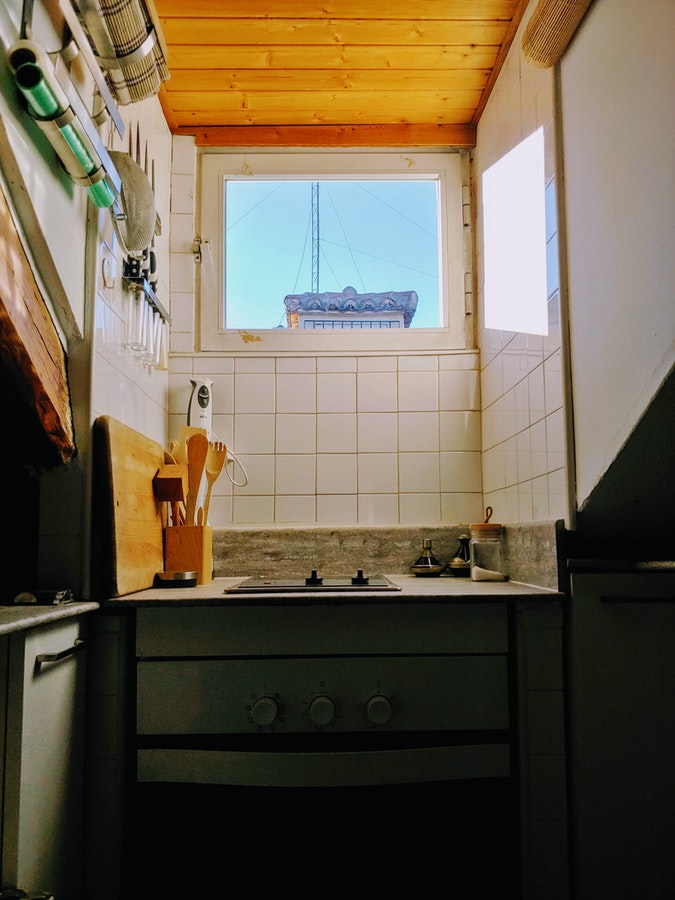 It does not matter if you need a leak or just interested in replacing your old pipes with new ones. The process of replacing kitchen sink drain pipes can at times be scary especially to the new DIY plumbers. However, replacing drain pipes under kitchen sink can be easy when equipped with the right information and knowledge.
It does not matter if you need a leak or just interested in replacing your old pipes with new ones. The process of replacing kitchen sink drain pipes can at times be scary especially to the new DIY plumbers. However, replacing drain pipes under kitchen sink can be easy when equipped with the right information and knowledge.
You might have seen the funny skits on TV where one works on the drain and ends up covered in water and yuck. This process is not that complicated as many people take it. In the guide, we will explain to you what you need and the whole process of replacing drain pipes under kitchen sink.
Contents
Materials Required in Replacing Drain Pipes under Kitchen Sink
- Plumber tape
- Pipe glue
- Light sandpaper
- A bucket
- Adjustable wrench
- PVC pipe piece to connect to the drain trap bottom
- A kit consisting of sink connectors and a drain trap
- Connecter sleeve
- Pipe Wrench
- Pipe Cleaner
Process: Replacing Drain Pipes under Kitchen Sink
Disconnect the old drain
- First, you have to disassemble the old drain to enable you to remove the strainer that is most likely the leaky culprit. The strainer is the back section that is located below the sink’s white bottom.
- Thereafter, turn the slip nuts clockwise. You need to ensure that you are using the pliers second set, which are clamped and gripped onto the pipe section that is located below the wrench. This will ensure the pipe is kept from turning. You will only be interested in having the slip nut turn and not the whole drain pipe assembly.
- After unscrewing the slip nuts, drop the pipe assembly down before removing it.
- The primary seal found around the basket strainer will now be the plumber’s putty that is found between the strainer’s top flange and the drain hole in the kitchen sink. However, this will never last forever. It can crack, harden or shrink after some years. At times, you can either stop a leak by tightening the locknut.
The Most Difficult Part
- Unscrewing the old locknut is considered as the hardest part. The locknut is what holds strainer in position. In case you happen to have an extra hand available, you can have the extra hand place pair of pliers to help prevent the strainer from turning as you try to loosen the locknut.
- The locknut is usually sealed/ welded into position by use of corrosion and mineral deposits. There is also a special wrench that has been specifically designed for locknuts referred to as the locknut wrench or the spud wrench.
- The big slip joint pliers having 3- ½ inch jaw opening also works well and you can use the pliers for other tasks.
- It does not matter the tool you use, you will at times find the locknut will not budge. In such a case, the single locknut cut with the hacksaw blade will only be the solution. You need to notice that it is almost impossible to have this done without cutting into strainer threads. You will always be in need of a new strainer.
Assembling the basket strainer
- Here, you will need the cardboard washers, rubber, plumber’s putty, and the new locknut to help you install the new strainer assembly. After dropping the strainer from the sink, you will have to place the plumber’s putty between the sink top and the strainer flange around the whole perimeter.
- With the cardboard washer and the rubber washer positioned between the locknut top and the sink underside, you will have to screw the locknut into place. Ensure you do clean any excess plumber’s putty which might have squeeze out around the strainer lip.
- Connecting the drain pipe assembly tailpiece to the strainer
- Have the tailpiece attached to the basket strainer using the tailpiece washer found between the strainer bottom and the tailpiece pipe. Ensure you do not tighten it fully since you will have to remove it later on to cut it.
- You can have the center outlet assembly or the side outlet assembly. It does not matter which one you have, the parts needed for configuration can be bought at the nearby hardware store.
- You will get kits for both the side outlet assemblies or the center outlet assemblies and you need to ensure that they do contain most of these important parts.
When not Sure
- In case you are not sure with what you are supposed to do, mark and cut the pipes a bit long. It is better for you to cut twice than having them cut too short and being forced to make an extra trip to the hardware store.
- Remember to insert tailpiece washers. There are other joints that need cone washers. The only joint that lacks washer is the ground joint located at the trap.
- Have any part that is loose, well-assembled and then toughly tighten all the slip nuts. The slip nuts should be tightened using your hand. In case there are any leaking joints, ensure you tighten them a little more but slightly using the slip joint pliers.
- Be keen not to over tighten. When you over tighten, you can easily crack the PVC pipe which can force you to go back to the hardware store.
Installation
- You might be forced to install a new adapter on waste drain pipe and connect to the PVC pipe by use of a rubber coupler. The PVC pipe will be connected to the steel drain pipe using a rubber coupler.
- The drain pipe that comes out of the wall should now have an adapter at its end. The adapter will have a slip nut and a washer and function just like the other types of joints in the drain assembly.
- In case the drain pipe you are using is made of plastic, you should never have any problems. However, if your drain pipe is made from old galvanized steel, you might find yourself running into corrosion that will make the slip nut impossible to retighten or loosen.
- Test the New Assembly for Leaks When Done
Conclusion
With the above guide, you should never experience any problem when replacing drain pipes under the kitchen sink. There are times when you might run into problems when replacing your kitchen pipes. It is important that you contact a professional plumber in case you are not sure of what to do.
